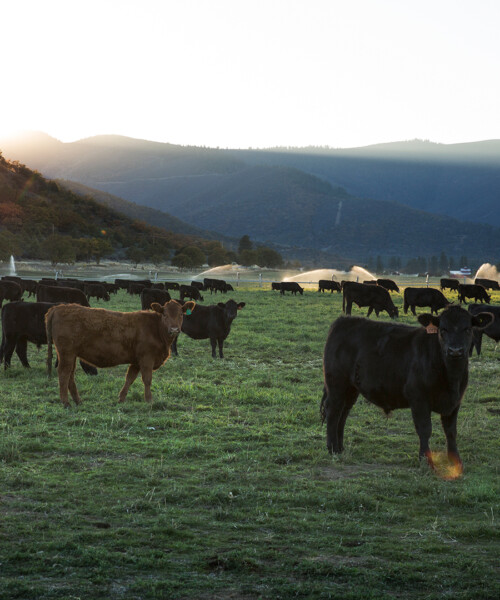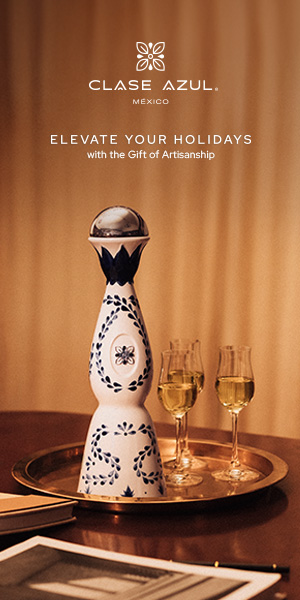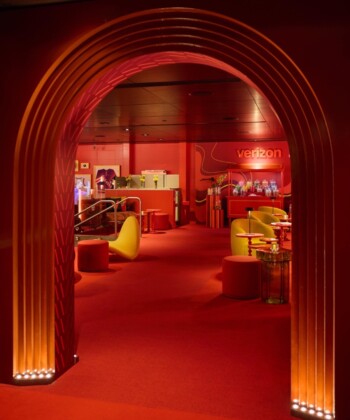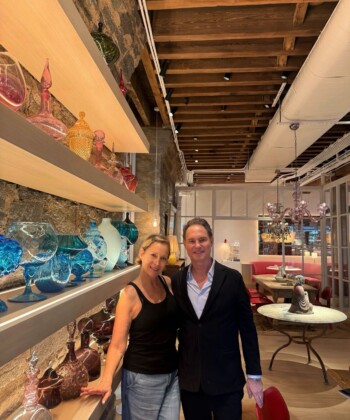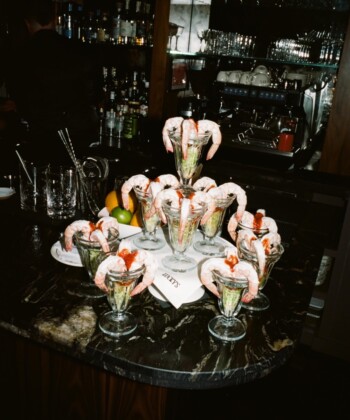An elite class of U.S. ranchers goes to extreme lengths to guarantee only the highest-quality meat for discerning carnivores willing to spend nearly double on super-premium cuts. While cheaper, feedlot-produced beef still dominates the domestic market, that’s steadily changing thanks to the example set by two West Coast agricultural pioneers—Bill Niman of BN Ranch and Anya Fernald of Belcampo Inc. Both have dedicated themselves to raising happier cows and better tasting meat, paving the way for consumers to enjoy four-star luxury burgers and strips at home, not just at top restaurants.
Bill Niman, whose pristine 1,000-acre BN Ranch is located in Marin County, rose to culinary prominence in the mid-1970s. It was then that he began a public discourse about the likely health problems associated with the use of antibiotics, steroids and growth hormones in cattle feed. It didn’t take long before acclaimed Bay Area restaurants, such as Alice Waters’ Chez Panisse and Zuni Café, began highlighting his transcendent beef on their menus.
“We were at the epicenter of new age food in the country. And we had a community of very conscious food people—both individuals and restaurateurs. We were able to grow with the demand, and the supply and demand began growing simultaneously,” remembers Niman, who lives on the stunning ranch with his wife, Nicolette, an environmental lawyer, and their two sons.
Niman—who has been dubbed, by various turns in the mainstream media, “the guru of happy cows,” “the Steve Jobs of meat” and “the godfather of sustainable meat”—only processes grass-fed beef, which, when done properly, he believes is more delicious than grain-fed. “And by the way, it’s better for you, much better for the environment, better for the animals and more sensible,” he adds.
While Niman sells beef on an impressive scale—around 2,000 head of cattle in the coming year—he limits nearly all his distribution to high-end retailers and restaurants in the Bay Area, where demand is sufficiently high. (BN Ranch hotdogs—a pack of five for $15—are available at Murray’s in New York City.)
It was only a matter of time before other agricultural entrepreneurs began offering humanely raised, grass-finished meat to a broader audience of home chefs. While Niman set the standard for quality, others took up where he left off and became focused on national distribution of restaurant-quality cuts to discerning home grill masters.
Enter Anya Fernald, a sustainable food expert and CEO of Belcampo, which raises free-range cattle and other livestock on its 20,000 acres of organic land. Fernald and her team obsessively control the complete production chain—from birth to slaughter to final point of sale. This year, Belcampo began selling its $175 Butcher Boxes and other products countrywide through its online store. It also runs several brick-and-mortar shops and restaurants in LA and northern California.

Cuts of meat at Belcampo Grand Central Market
Asked what drives customers to spend a meaningful premium for her product, Fernald explains, the “primary driver is health and wellness. People are concerned about antibiotics in their food supply, about foods that can cause weight gain, heart disease and more.”
Other suppliers of sustainable, grass-fed meat agree that knowledge—and a willingness to pay top-dollar—is key: “We sell only to the end-user and often an educated professional family in the 30- to 45-year-old category,” says Nelson Hoy of Berriedale Farms in Williamsville, VA.
The toughest challenge facing superior beef operations today is from commercial competitors who are not transparent about their practices. All too often, say Fernald and Niman, major producers will claim to finish their less-expensive beef on organic green grass when in fact they merely moisten grain before feeding, whereby the “sprouted” grain can technically count as grass.
“I don’t see grass-fed beef replacing grain-finish,” admits Niman. “But I do see demand for it growing more and more. And I think as people understand the other grass-fed cultures throughout the world—from Argentina to Tasmania, Australia and New Zealand—they’ll understand how sensible it is.”
Until businesses like BN Ranch and Belcampo become more commonplace, consumers can seek out a source-verified butcher in their area. Fleishers, in New York City, is an excellent option. “They don’t always have grass-finished meat,” says Fernald, “but they always advertise clearly what the finishing technique is, so you can be informed about your choices.”
Additional premium, grass-fed beef producers that ship locally:
New York:
Fleishers Craft Butchery, fleishers.com, info@fleishers.com, 718-971-5331
Connecticut:
Stuart Family Farm (Bridgewater), stuartfamilyfarm.com, 860-210-0595
Washington, DC:
Berriedale Farms (Williamsville, VA), berriedalefarms.com, berriedalefarms@gmail.com, 540-925-2308
Pennsylvania, New Jersey, Delaware, Maryland:
Landisdale Farm (Jonestown, PA), landisdalefarm.com, 717-865-6220
Other U.S. Listings:


























